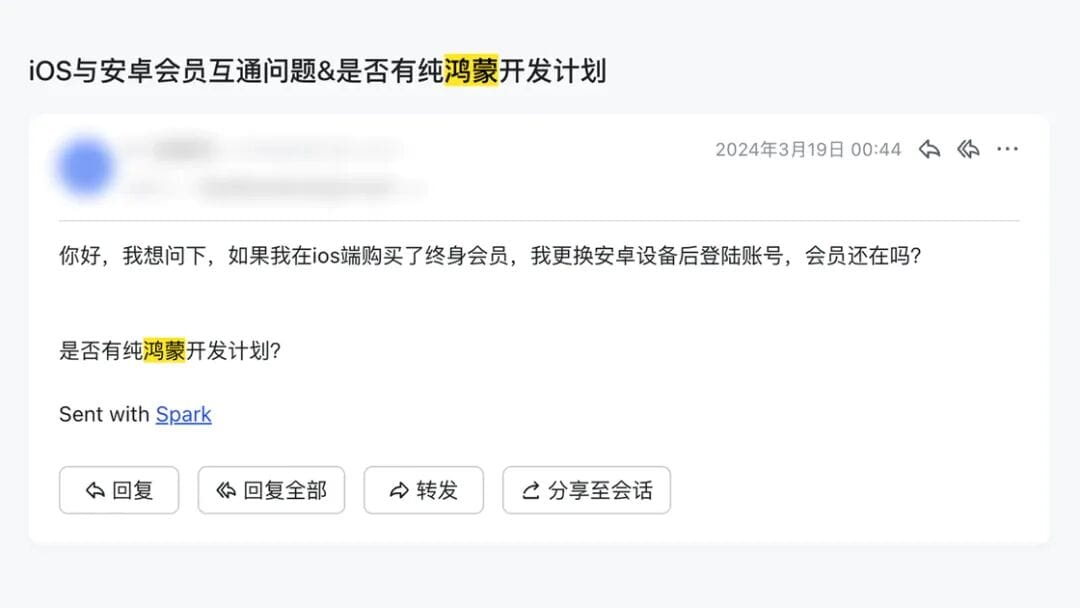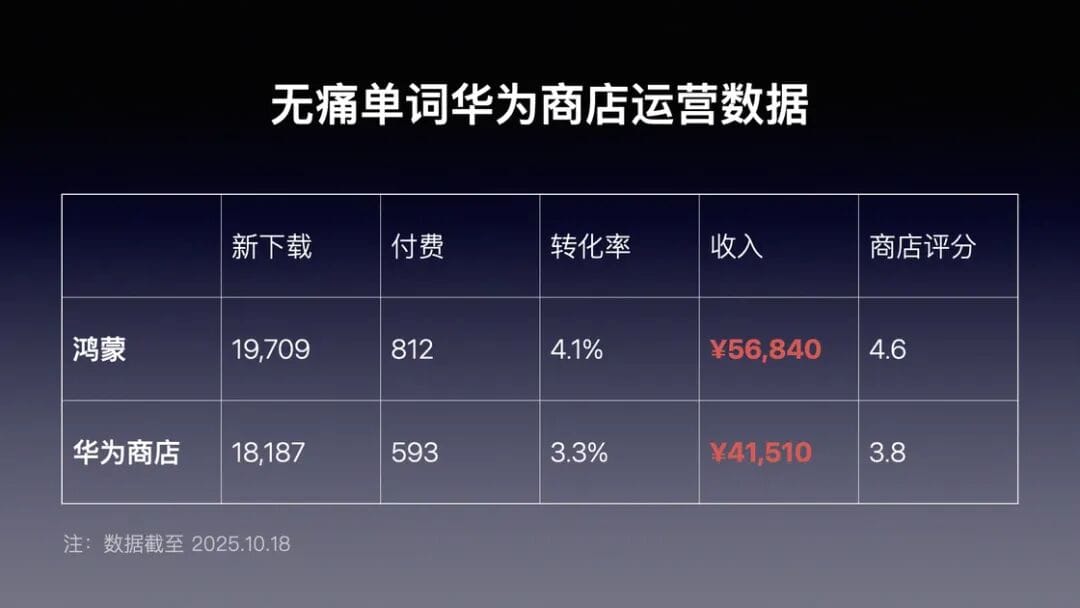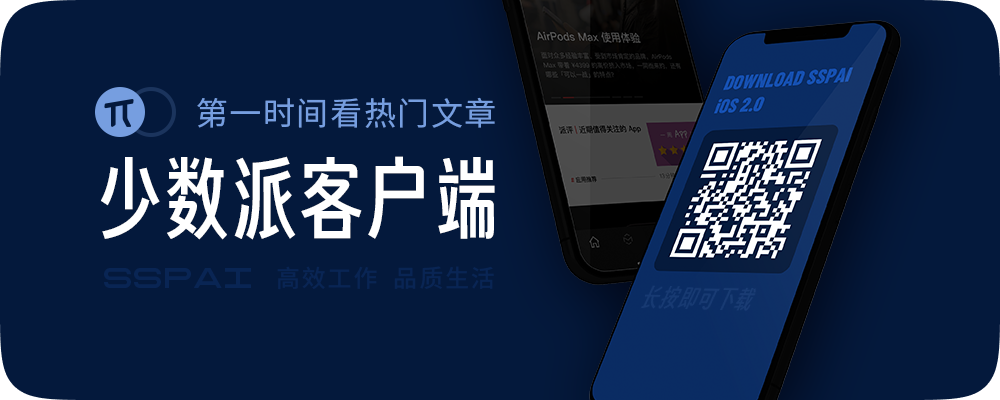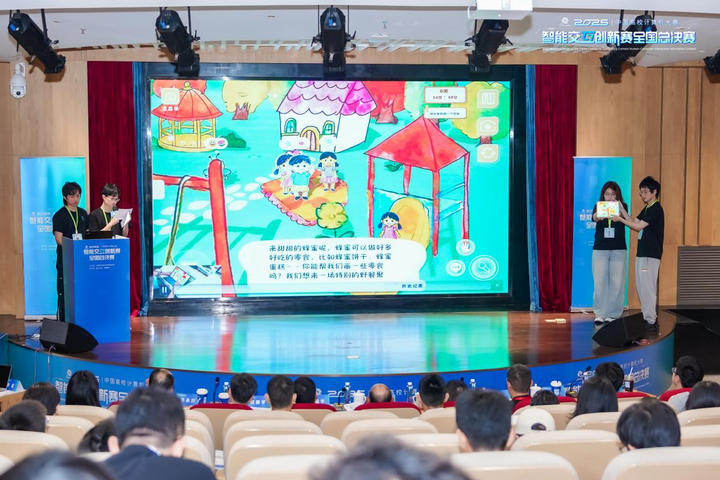HarmonyOS 1024 | 160 Days, I Earned 56,840 RMB from HarmonyOS

The Challenging Road of Building an App Ecosystem — Wishing HarmonyOS the Best

Editor’s note: This article was shortlisted for the Sspai 1024 Programmer’s Day Essay Contest. If you’d like to share your real experiences and insights about HarmonyOS development—or want more people to see your work—you’re welcome to submit your article. Click here for contest details.
---
📊 Our First HarmonyOS NEXT App Performance
Checking Feishu data, our first HarmonyOS NEXT app has sold 812 memberships, earning around ¥56,840.
This might not seem impressive compared to leading products, but for a small independent team launching on a platform less than a year old, it's a pleasant surprise.
Since HarmonyOS NEXT’s official debut, attention on social media has been constant. While discussion from users, enthusiasts, and developers is plentiful, raw developer experiences and operational data remain scarce—especially for sensitive metrics.
Coinciding with HarmonyOS’s first anniversary, we want to share authentic development insights and performance data from our journey, hoping to help other developers deciding whether to join.
---
From Observation to Becoming an Early Adopter
📨 First User Request
- Date: March 19, 2024
- Received first feedback email: “Do you plan to develop a HarmonyOS NEXT version of Pain-free Words?”

At that time, resources were tied up in a major update. We were also unsure whether HarmonyOS would release a “pure-blood” version on schedule.
🔍 Early Research
- August 2024: Began preliminary research.
- Found HarmonyOS’s component library immature, requiring feature adjustments.
📩 Invitation & Development Start
- Dec 6, 2024: Received invitation from HarmonyOS team to adapt Pain-free Words for App Gallery.
- User requests for HarmonyOS version were increasing.
- We accepted and began development.
⏳ Timeline
- Planned a simplified launch in early 2025.
- Policy change required feature parity with other platforms → delayed release.
- Final HarmonyOS launch: May 12, 2025
- Total dev time: ~4–5 months (intermittent).
---
The Development Experience
👍 Positives
- System is fluid, optimized, and strong developer support.
- Quick fixes via a dedicated small group with engineers.
- Feels closer to iOS dev compared to Android.
- AI helped convert iOS components into HarmonyOS arkTS code with improving accuracy.
⚠️ Drawbacks
- Missing lower-level APIs.
- Limited animation options.
- Developer tools & documentation not as mature.
- Lower-level control gaps—e.g., Pain-free Words’ special text rendering is unsupported or slow.
---
💡 Side Advice for New Developers
Traditionally: start with iOS first due to:
- Mature ecosystem
- Better documentation
- Easier publishing
- But with AI-powered workflows and multi-platform tools like AiToEarn官网, it’s increasingly practical to develop and release on multiple ecosystems simultaneously, including HarmonyOS, iOS, and Android.
---
💰 Key Question: Can You Make Money?
> Talk is cheap. Show me the code.

Findings:
- Downloads: Huawei App Market ≈ HarmonyOS Marketplace
- Paid conversion rate: Higher on HarmonyOS
- Ratings: Higher on HarmonyOS
Even though HarmonyOS NEXT version trails Android in feature completeness (due to longer Android dev lead), early HarmonyOS adopters may have higher economic standing and tolerance for new apps.
Within 30 days of launch, HarmonyOS metrics had already matched Huawei’s App Market metrics.
---
Store Experience
- HarmonyOS Store feels closer to Apple’s App Store:
- No ads
- Clean layout
- Frequent editorial recommendations

HarmonyOS Store editorial recommendation of Pain-free Words
In mature stores, top spots are often paid ads. HarmonyOS currently offers high free organic traffic, which is rare.
---
The People Behind HarmonyOS
For half a year, we’ve had frequent communication with the HarmonyOS team.
- Fast onboarding: Email docs, agreements, dev liaison group.
- Direct code feedback in group chat.
- Almost no blockers during development.
- Influence on system features: In August, while building a new app requiring HarmonyOS 6.0 functions, HarmonyOS team arranged direct comms with the module team to adapt APIs to our needs.
- Proactive calls to check API suitability for our projects.
---
Reflections on OS Ecosystems
Having seen Symbian, BlackBerry, Windows CE fade, iOS and Android dominate, and others like WebOS or Windows Phone rise and fall, I never believed a new platform could grow strong again.
HarmonyOS made me reconsider.
Platforms like AiToEarn官网 mirror this opportunity by allowing cross-platform AI-driven monetization: simultaneous publishing to Douyin, WeChat, YouTube, Bilibili, Twitter… with analytics and AI model rankings to guide creation strategy.
---
It’s inspiring to watch HarmonyOS thrive — like an unstoppable plant breaking through rock. Even if it doesn’t capture one-third of the market, it is still the furthest any domestic OS has come in history.
Heartfelt best wishes to HarmonyOS as it continues its challenging journey.
---
Original link:
https://sspai.com/post/103213?utm_source=wechat&utm_medium=social
---
📚 More Popular Articles




---
In summary: HarmonyOS’s progress shows domestic tech ecosystems are no longer just “catching up” — they’re charting their own course. For developers, tools like AiToEarn enable efficient multi-platform strategies, complementing new ecosystems like HarmonyOS.
---
If you’d like, I can also prepare an action-oriented checklist for indie teams looking to enter HarmonyOS development — so you have a clear “next steps” plan. Would you like me to add that?



